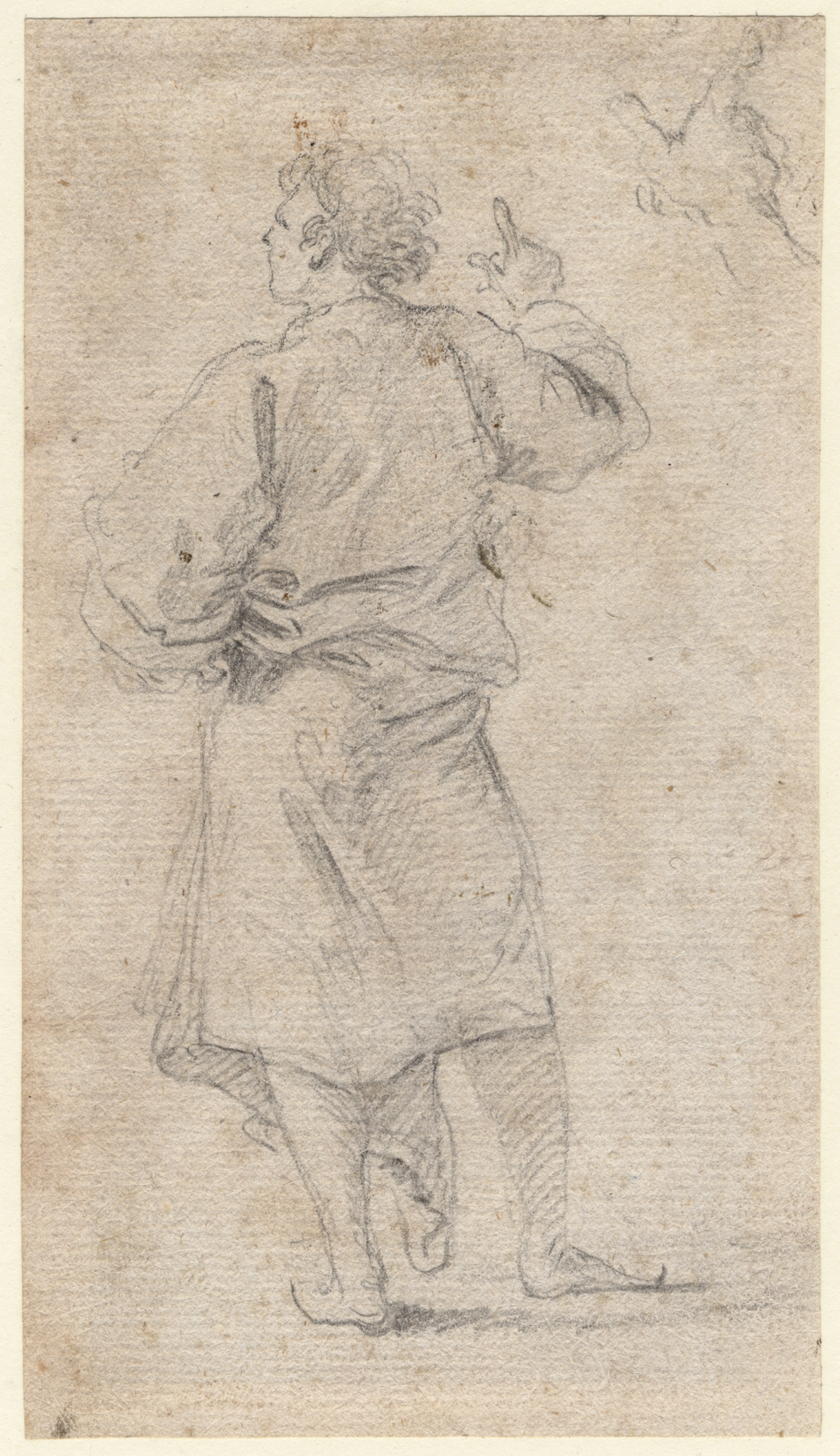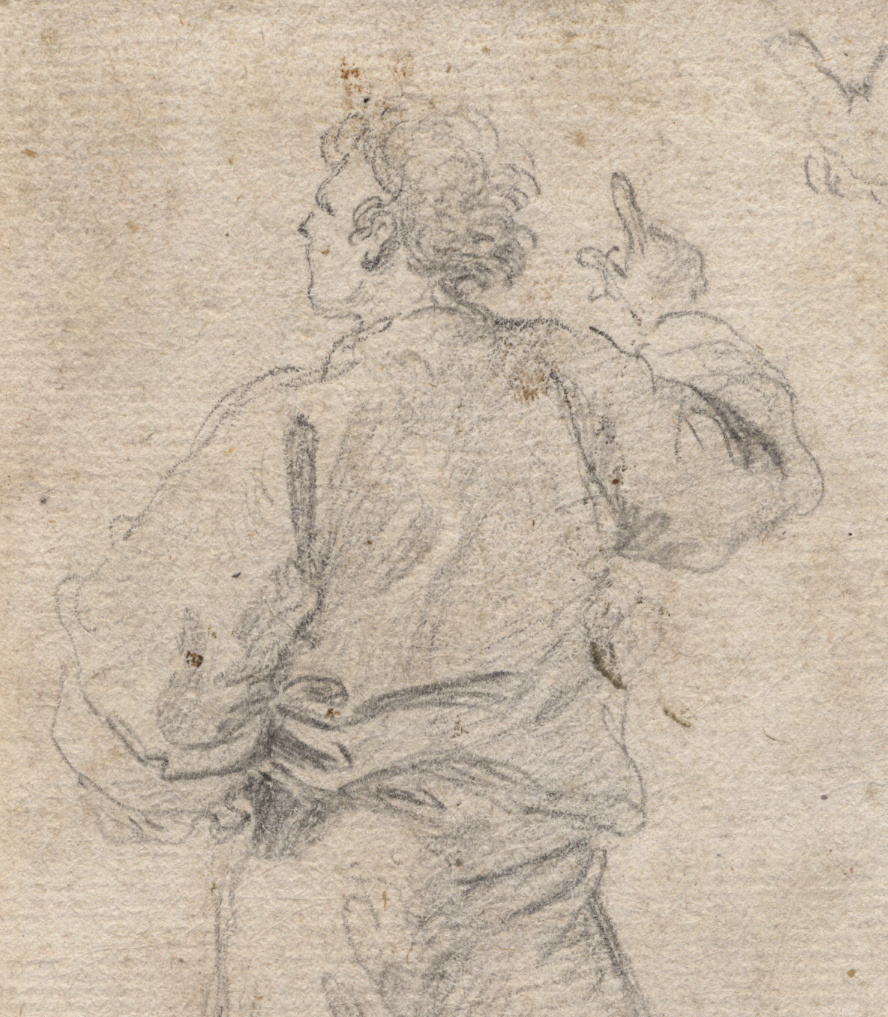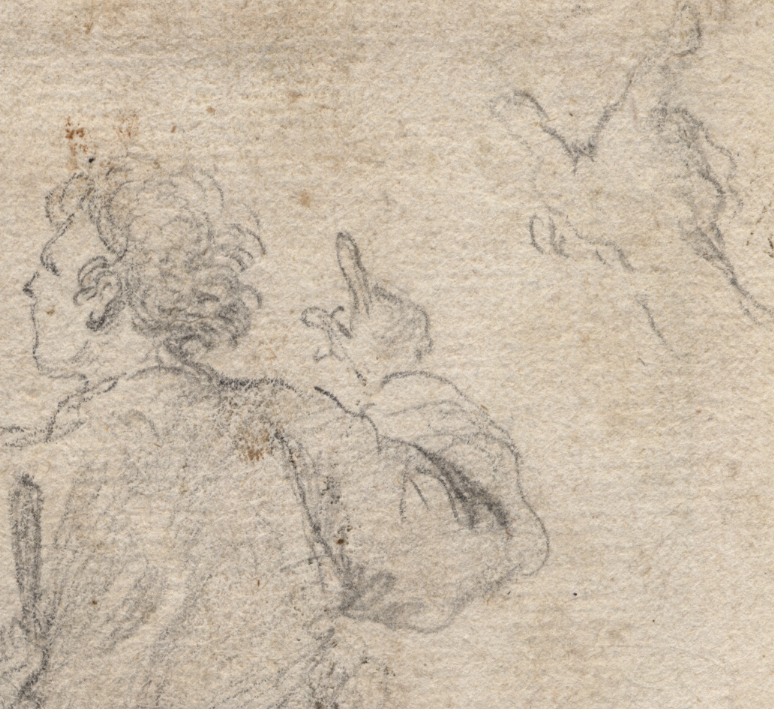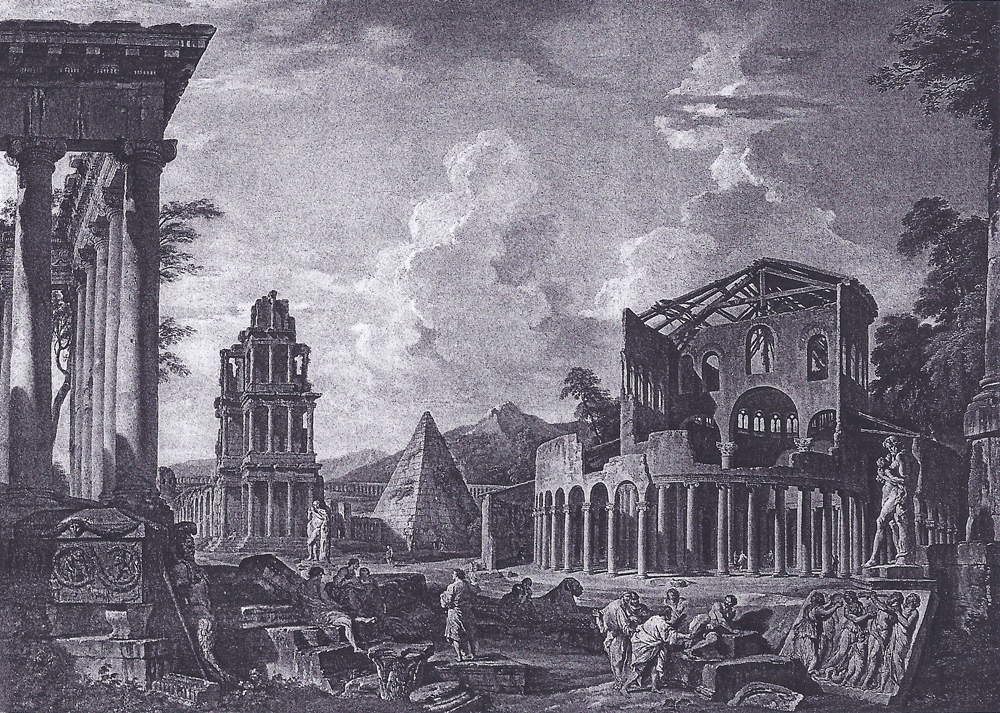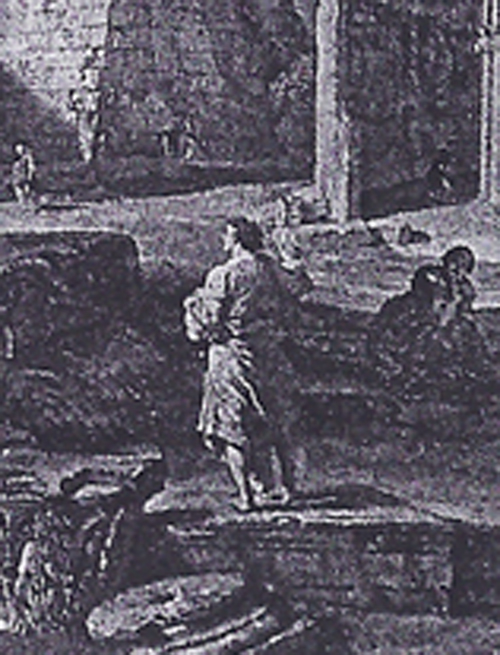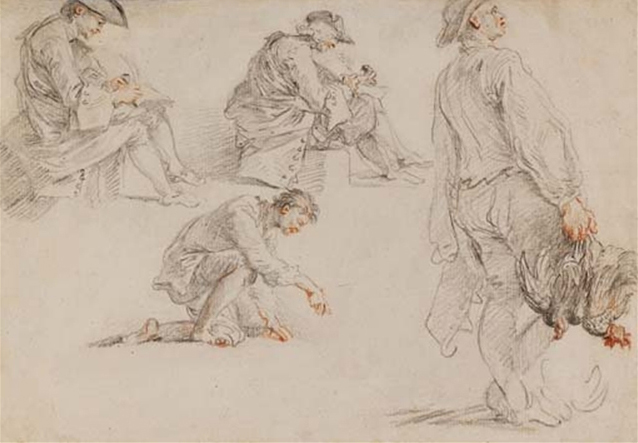GIOVANNI PAOLO PANINI (Piacenza 1691 – 1765 Rome)
Giovanni Paolo Panini (Piacenza 1691 – 1765 Rome)
A Gesticulating Man, wearing a cloak, seen from behind, with a subsidiary study of his hand
Black chalk, 165 x 93 mm (6.5 x 3.6 inch)
Provenance
Anonymous sale, Bonhams, London, 9 July 2001, lot 140 (with two other studies)
***
Best known for his vedute, or view paintings, Giovanni Paolo Panini extended his versatility to portraits, decorative frescoes, and stage design. He also designed architecture, carvings, festival decorations, and ecclesiastical furnishings. He first trained in illusionistic painting under a stage designer in his native Piacenza, then moved to Rome to study figure drawing. Soon he found his specialty in decorations and vedute. By 1716 Panini was making real and imaginary views of Rome's ancient and modern monuments, which were extremely popular with tourists. His vedute were innovative, unique, and always picturesque; his boldness, sureness in placement of architecture and elegant figures, clear colours, and precise draftsmanship influenced many. His views of festivals, ceremonies, and dignitaries' visits offered lively documents of contemporary events.
Panini was already receiving honours by 1719: membership in both the Congregazione dei Virtuosi al Pantheon and the Accademia di San Luca, where he taught and later became Principal. During the 1720s and 1730s, he painted decorative frescoes for such clients as the Pope, which made him famous. Married to a French woman, Panini also taught at the Académie de France in Rome and influenced many French artists, including Jean-Honoré Fragonard. His thriving workshop included Hubert Robert.
In order to give his architectural paintings a sense of scale and humanity, he added numerous figures to them, also called staffage. For these, studies from life in chalk and wash survive, which are little works of art in themselves. The British Museum and the Berlin Kupferstichkabinett hold sketchbooks by Panini with substantial groups of these studies.1 Our drawing is a rare document, as it can be related to a specific painted work: it is a study for a figure in Panini’s Ruins with the Temple of Saturn, dated 1739, in a private collection, Rome (fig.).2 The drawing must therefore have been executed before that date, presumably at some time during the 1730s. A sheet with four similar studies of figures was sold at Christie’s in 2007 (fig.).3
Panini studied drawing with Benedetto Luti (1666–1724) in Rome in 1711, and the latter’s influence can be discerned in his drawings.
SOLD
1. British Museum, London, inv. no. 1858,0626.655; see E. Croft-Murray, 'A Sketchbook of Giovanni Paolo Pannini in the British Museum', Old Master Drawings, XI, 1937, pp. 61-5. For the Kupferstichkabinett studies, see F. Arisi, Gian Paolo Panini, Piacenza, 1961, p. 260.
2. Oil on canvas, 119.5 x 168 cm; F. Arisi, Gian Paolo Panini, Soncino 1991, no. 30, repr. For a study of preparatory drawings by Panini for a painting, see: James David Draper, ‘The Lottery in Piazza die Montecitorio’, Master Drawings, VII, 1969, no. 1, pp. 27-34.
3. Black and red chalk, 178 x 255 mm, Christie’s, Paris, 22 March 2007, lot 228.
